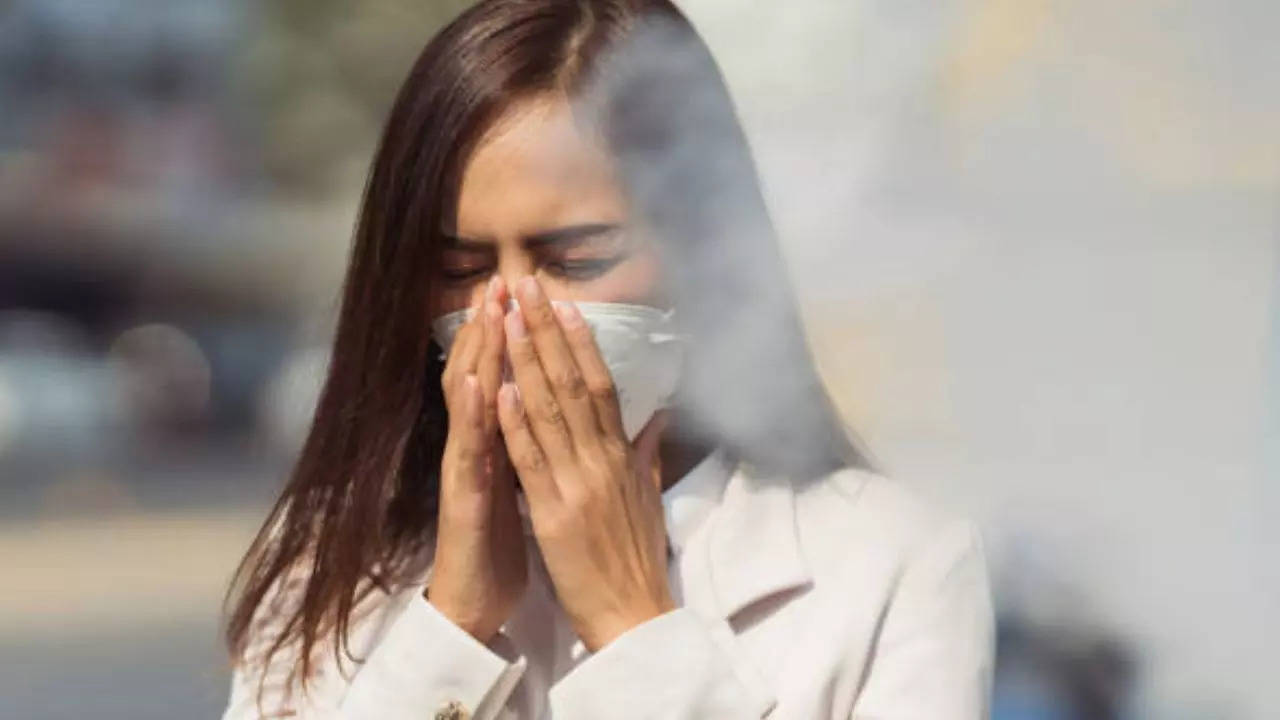Contents
-
news
-
Health
The silent killer in the air: How pollution triples your blood clot risk
New research shows that long-term exposure to air pollution significantly increases the risk of blood clots, especially fine particles and nitrogen dioxide. Linked to stroke and venous thromboembolism, these clots can affect even people with healthy lifestyles. Read on to know how.

The silent killer in the air: How pollution triples your blood clot risk (Image credit: iStock)
According to recent research, prolonged exposure to polluted air can significantly increase the risk of developing dangerous blood clots. “What is striking about our study is that exposure to some of the most common types of pollutants in the air we breathe,” said Dr. Pamela Lutsi, lead author and professor of public health at the University of Minnesota. There has been an increase in serious blood clotting disorders.” minneapolis.
Dr. Lutse explains this air pollutionIts health effects extend far beyond respiratory conditions. “This affects the risk of blood clots, even in people who are otherwise healthy and have no pre-existing respiratory problems,” he said.
The study analyzed health data from more than 6,600 participants across the United States, tracking them for 17 years. The researchers also measured participants’ daily exposure to four major air pollutants: fine particulate matter, nitrogen dioxide, nitrogen oxides and ozone.
The findings showed that long-term exposure to fine particles increased the risk of blood clots by 43 percent. This pollutant, which is often associated with events such as wildfires and industrial emissions, was shown to be a significant contributor to the clotting.
Exposure to nitrogen dioxide nearly tripled the chance of developing a blood clot, while nitrogen oxide was associated with a 2.3-fold increase in risk. Interestingly, ozone exposure did not show any significant association with clotting.
Blood clots, especially venous thromboembolism (VTE), can be life-threatening. VTE includes deep vein thrombosis (DVT), which causes clots in the veins – often in the legs – and pulmonary embolism, where clots travel to the lungs. Both conditions can cause serious health complications, including stroke.
These findings, published Dec. 12 in the journal Blood, underscore the urgent need for stricter air quality regulations in the United States. Dr Lutsi and his team hope the study will encourage policy makers to take action to improve air pollution standards to protect public health.
How to Prevent Blood Clots
While reducing air pollution exposure requires systemic changes, there are some steps individuals can take to reduce the risk of blood clots:
– Stay active: Regular physical activity helps improve blood circulation and reduce the risk of clots, especially for people with sedentary lifestyles. If you work at a desk for a long time, take breaks to move around.
– Stay hydrated: Dehydration causes blood to thicken, increasing the chance of clot formation. Drink plenty of water throughout the day to keep your blood flowing smoothly.
– Wear compression stockings: For people who are prone to blood clots, especially those who travel long distances, compression stockings can improve blood flow in the legs.
– Quit smoking: Smoking damages blood vessels and increases the risk of clots. Quitting this habit significantly reduces the chances of clot-related complications.
– Maintain a healthy weight: Excess weight puts extra pressure on the veins and increases the risk of DVT. A balanced diet and regular exercise can help manage weight effectively.
– Monitor medical conditions: Conditions such as diabetes, high blood pressure and high cholesterol increase the risk of clots. Work with your healthcare provider to manage these effectively.
– Consult a doctor if necessary: If you notice symptoms such as swelling, redness, or unexplained pain in the legs – or experience trouble breathing – seek medical help immediately.
Get the latest news live on Times Now with breaking news and top headlines from around the world.
air pollution


